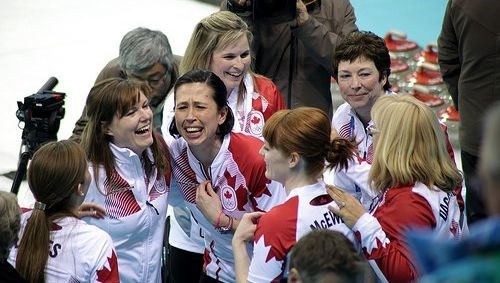Comment
The Sochi inspiration won't get Canadians off the couch

Andy Miah/Flickr
26.02.2014
What magnificent memories Canada’s Olympians gave us the past two weeks. They’ve been brilliant on the ice and snow, selfless and supportive as teammates, eloquent and compassionate in interviews. When Montreal Mayor Denis Coderre was federal sports minister, he used to say that the athletes who march behind the flag should exemplify the values of that flag. In Sochi, Canada’s Olympians did that in spades. They’ve given us enormous pride.
Yet when those Olympians return to Canada, it will be to a country where opportunities to pursue the same sports they dazzled us in are scarce and extremely expensive, out of reach for all but a few of the children and young people who have been inspired by their performances. While the mantra from the Canadian Olympic Committee, Own the Podium and corporate advertising messages has been that “inspiration is enough,” the evidence doesn’t actually support the step from this inspiration to participation.
Data from many countries show that there is very little increase in participation immediately after an Olympics, and even less sustained participation. Statistics Canada’s General Social Surveys show that grassroots participation (the percentage of the population over 15 that participates regularly in organized competitive sports) has declined, from 45 per cent in 1992 to 26 per cent in 2010.
Over the same period, Canadian governments have invested more money in preparing high-performance athletes, with significant results: Canada’s medal haul in each four-year Olympiad has increased from 15 medals in 1988 (Calgary and Seoul) to 44 medals in 2010-12 (Vancouver and London). Yet the more medals we win, the fewer Canadians participate.
Why is this? Are our children and young people failing to be inspired? No – the data do not show that. There are regular reports of lineups to join speed-skating clubs after a Winter Games, or rowing clubs after a Summer Games.
Unfortunately, such clubs are often only able to accept a very small percentage of those who have been “inspired” to participate – they do not have the capacity, in facilities or coaches, to accommodate the enthusiastic young people who are keen to try their sport.
Canada’s sport system discourages such capacity. Today, both athletes and national sports organizations are funded primarily on the basis of medals. Since the 1980s, techniques and systems of early talent identification have permitted national sport organizations to identify those who show the potential for success at much younger ages, and thus to focus resources on fewer and fewer athletes. It’s persuaded them to abandon the pyramid – the earlier model of development based on the premise of a broad base of participation.
With funding programs such as Own the Podium providing resources to fewer and fewer athletes and sports, there are even fewer opportunities to participate.
Moreover, in many jurisdictions, years of underfunding to the accessible programs of municipal recreation and school-based physical education and after-school sport has meant that most opportunities, and certainly the very best developmental programs, are user-pay, so that the very best athletes today are the ones whose parents can pay for their ice time, equipment, travel and coaching. We applaud those families, but it’s meant that Canadian Olympic teams have become less and less representative of Canada every year.
It is possible to have both medals and increased participation. But sports leaders, governments and advertisers have to stop pretending that winning medals will somehow magically “inspire” increased take-up when they make no provision for the increased capacity and accessibility that would require. Just as Canada has planned for and funded a high-performance system to win a steadily increasing number of medals over the past 25 years, it is clearly necessary to plan and fund for increased participation. It would be a fitting tribute to the heroes of Sochi.





